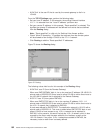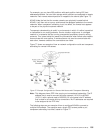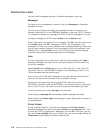
For example, you can have 255 partitions with each partition having 255 host
addresses available. You can then manage which partitions are assigned to remote
networks. Each remote network partition is mapped to the subnet (see Figure 77).
AS/400 hides the fact that the remote networks are physically located behind
AS/400. It will then act as a proxy and forward the datagram packets to the remote
networks. When transparent subnetting is put into effect, the remote host appears
to be part of the physical corporate network.
Transparent subnetworking is useful in environments in which it is either impractical
or impossible to run routing protocols. Such a situation might occur in a bridged
network or in networks that are running unsupported proprietary dynamic routing
protocols. This is best suited for leased line connections when remote sites need to
communicate with one another. If remote sites do not need to communicate with
each other, however switched line connections are viable.
Figure 77 shows an example of how an network configuration could use transparent
subnetting for remote LAN access.
Note: This diagram shows PPP links carrying out unnumbered networking. The IP
address that is used to connect the home network (10.5.0.0) to AS/400
(10.5.0.1) with a subnet mask of 255.255.0.0 is the same local IP address
that is used for all remote dial-up connections. No IP addresses are required
to be assigned to the PPP links.
The following steps are an example of how to configure AS/400 to connect to
multiple LAN subnets. The example uses a single PPP answer profile to put
transparent subnetting into effect, based on Figure 77.
Figure 77. Example Configuration for Remote LAN Access with Transparent Subnetting
Chapter 4. Configuring Point-to-Point TCP/IP (PPP and SLIP) 105


















